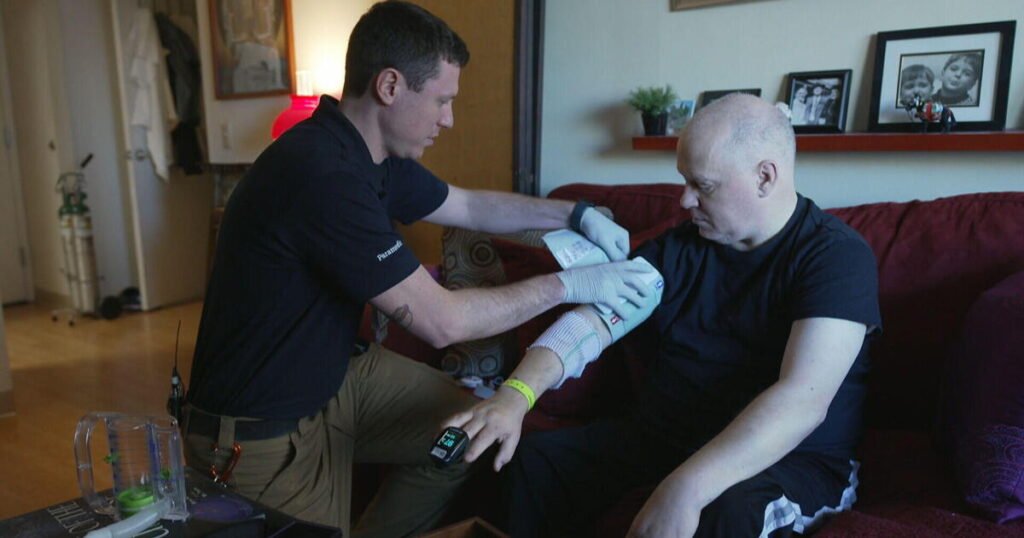More hospitals are treating patients at home to reduce overcrowding. Here’s how it works.
For James Edwards, a 57-year-old patient with congestive heart failure, recovering at home from shortness of breath rather than in a hospital setting was a welcome option. Nurses come to check on him twice a day and monitoring equipment would notify the hospital about any change in vitals.
The house calls are part of a mobile medical program that’s growing nationally, with Medicare, Medicaid and some private insurance carriers offering coverage for the service.
There are more than 380 approved hospital-at-home programs in 39 states, according to the Centers for Medicare & Medicaid Services. In overcrowded hospitals, the programs can help free up needed beds — a persistent issue in facilities such as Mass General Brigham. Last year, nearly 3,000 patients were treated in the voluntary program.
“The whole idea of home hospital is that you’re making the patient the center of care,” said Dr. Stephen Dorner, the chief clinical and innovation officer for the Healthcare at Home program at the Boston-area hospital.
Patients who participate in the programs also have better outcomes, Dorner said, like lower 30-day readmissions, lower rates of complications and even lower rates of mortality.
Being in a familiar setting can help speed up healing, according to Dr. Lauren Doctoroff, a physician at Mass General Brigham’s program.
“If you feel more comfortable and are less anxious and are sleeping better, you’re going to recover faster and better,” Doctoroff said.
Critics such as National Nurses United, America’s largest union for registered nurses, have raised concerns about continuity and quality of care, along with cost. But if Congress can’t agree on a spending bill and lets Medicare and Medicaid payments for the program lapse, Dorner says patient care could suffer.
“It’s a critical part of the answer to overcrowding,” Dorner said. “We would much rather meet patients where they are in the homes than in the hallways of our Emergency Department. We know that it’s not the best way to receive care.”
Edwards spent eight days recovering at home rather than in a hospital bed and he believes he got the best of both worlds.
“I have my dog here. I have my friends and I have the nursing staff that comes over to see me,” Edwards said.
You may be interested

Tory Lanez Must Pay Megan Thee Stallion for ‘Disruptive’ Deposition
new admin - Aug 02, 2025[ad_1] Tory Lanez has been ordered to cover Megan Thee Stallion’s legal fees after he was combative and feigned ignorance…

8/01: CBS Mornings Plus
new admin - Aug 02, 2025President Trump announced higher tariffs against more than 60 U.S. trading partners, starting next week. Also, the “Loud for Love”…

Commanders’ stadium plans take major step forward
new admin - Aug 02, 2025[ad_1] NEWYou can now listen to Fox News articles! The Washington Commanders’ pursuit of a playing field at the old…
































